-
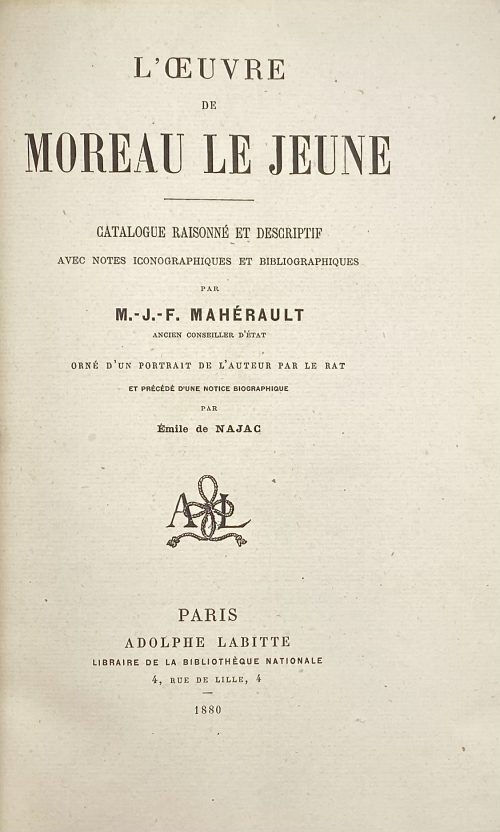 Binding: Hardcover, 25.5 x 17.8 x 4.7 cm, collated 4to, ¾ brown crushed morocco, bordered with gilt double fillet, raised bands, gilt fleurons in compartments, gelt lettering, marbled endpapers, top margin gilt; text printed on laid paper; frontis. on wove paper. Title-page: L'OEUVRE | DE | MOREAU LE JEUNE | — | CATALOGUE RAISONNÉ ET DESCRIPTIF | AVEC NOTES ICONOGRAPHIQUES ET BIBLIOGRAPHIQUES | PAR | M.- J.- F. MAHÉRAULT | ANCIEN CONSEILLER D’ÉTAT | ORNÉ D’UN PORTRAIT DE L’AUTEUR PAR LE RAT | ET PRÉCÉDÉ D’UNE NOTICE BIOGRAPHIQUE | PAR | Émile de Najac | {publisher’s device} | PARIS | ADOLPHE LABITTE | LIBRAIRE DE LA BIBLIOTHÈQUE NATIONALE | 4, RUE DE LILLE, 4 | – | 1880 || Collation: ffl, π2 (h.t., t.p.), a4 b2 1-674 682, 4ffl; total 278 leaves within flyleaves plus engraved frontispiece portrait of M.-J.-F. Mahérault by Paul Edme Le Rat w/tissue guard. Pagination: [4] [i] ii-xi [xii blank], [1] 2-538 (with page 538 erroneously numbered 568) [2 colophon/blank]; total 556 pages, ils. Contributors: Jean Michel Moreau [Moreau le Jeune] (French, 1741 – 1814) – artist, character. Marie Joseph François Mahérault (French, (1795 – 1879) – author, text. Comte Émile de Najac (French, 1828 – 1889) – author, biography. Paul-Edme Le Rat (French, 1849 – 1892) – artist, engraver. Adolphe Labitte (French, 1832 – 1882) – publisher. Georges Chamerot (French, 1845 – 1922) – printer.
Binding: Hardcover, 25.5 x 17.8 x 4.7 cm, collated 4to, ¾ brown crushed morocco, bordered with gilt double fillet, raised bands, gilt fleurons in compartments, gelt lettering, marbled endpapers, top margin gilt; text printed on laid paper; frontis. on wove paper. Title-page: L'OEUVRE | DE | MOREAU LE JEUNE | — | CATALOGUE RAISONNÉ ET DESCRIPTIF | AVEC NOTES ICONOGRAPHIQUES ET BIBLIOGRAPHIQUES | PAR | M.- J.- F. MAHÉRAULT | ANCIEN CONSEILLER D’ÉTAT | ORNÉ D’UN PORTRAIT DE L’AUTEUR PAR LE RAT | ET PRÉCÉDÉ D’UNE NOTICE BIOGRAPHIQUE | PAR | Émile de Najac | {publisher’s device} | PARIS | ADOLPHE LABITTE | LIBRAIRE DE LA BIBLIOTHÈQUE NATIONALE | 4, RUE DE LILLE, 4 | – | 1880 || Collation: ffl, π2 (h.t., t.p.), a4 b2 1-674 682, 4ffl; total 278 leaves within flyleaves plus engraved frontispiece portrait of M.-J.-F. Mahérault by Paul Edme Le Rat w/tissue guard. Pagination: [4] [i] ii-xi [xii blank], [1] 2-538 (with page 538 erroneously numbered 568) [2 colophon/blank]; total 556 pages, ils. Contributors: Jean Michel Moreau [Moreau le Jeune] (French, 1741 – 1814) – artist, character. Marie Joseph François Mahérault (French, (1795 – 1879) – author, text. Comte Émile de Najac (French, 1828 – 1889) – author, biography. Paul-Edme Le Rat (French, 1849 – 1892) – artist, engraver. Adolphe Labitte (French, 1832 – 1882) – publisher. Georges Chamerot (French, 1845 – 1922) – printer. -
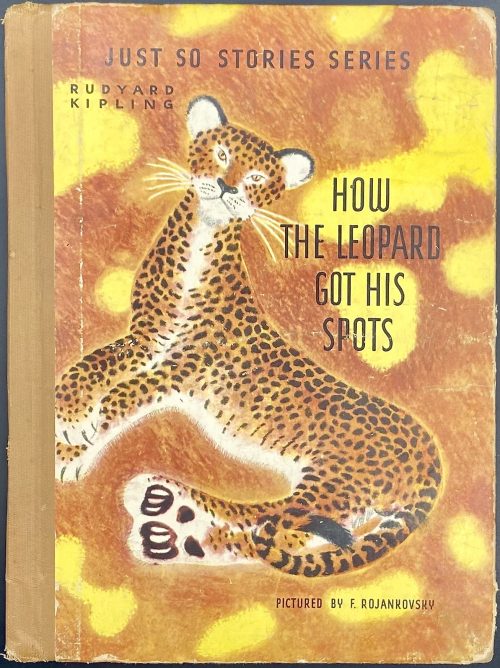 Hardcover volume, 24 x 18 cm, cloth-backed pictorial paper over cardboard (possibly, owner's), pictorial endpapers, no dust jacket; pp.: [2] – pictorial t.p. / copyrignt+imprint + [26] unpaginated pages (13 leaves); in-text photomechanical b/w and coloured illustrations after Feodor Rojankovsky. Front cover (pictorial): JUST SO STORIES SERIES | RUDYARD KIPLING | HOW | THE LEOPARD | GOT HIS | SPOTS | PICTURED BY F. ROJANKOVSKY || Title-page (pictorial): JUST SO STORIES SERIES | HOW | THE LEOPARD | GOT | HIS SPOTS | BY RUDYARD KIPLING | ILLUSTRATED BY | F. ROJANKOVSKY | GARDEN CITY PUBLISHING COMPANY, INC., GARDEN CITY, N. Y. || Contributors: Rudyard Kipling (British, 1865 – 1936) Feodor Rojankovsky [Rojan; Фёдор Степанович Рожанковский] (Russian-American, 1891 – 1970)
Hardcover volume, 24 x 18 cm, cloth-backed pictorial paper over cardboard (possibly, owner's), pictorial endpapers, no dust jacket; pp.: [2] – pictorial t.p. / copyrignt+imprint + [26] unpaginated pages (13 leaves); in-text photomechanical b/w and coloured illustrations after Feodor Rojankovsky. Front cover (pictorial): JUST SO STORIES SERIES | RUDYARD KIPLING | HOW | THE LEOPARD | GOT HIS | SPOTS | PICTURED BY F. ROJANKOVSKY || Title-page (pictorial): JUST SO STORIES SERIES | HOW | THE LEOPARD | GOT | HIS SPOTS | BY RUDYARD KIPLING | ILLUSTRATED BY | F. ROJANKOVSKY | GARDEN CITY PUBLISHING COMPANY, INC., GARDEN CITY, N. Y. || Contributors: Rudyard Kipling (British, 1865 – 1936) Feodor Rojankovsky [Rojan; Фёдор Степанович Рожанковский] (Russian-American, 1891 – 1970) -
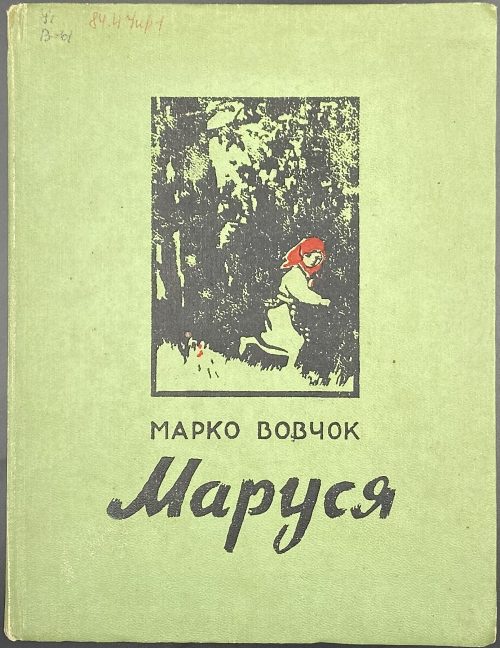 Hardcover, 22.8 x 17.6 cm, green buckram, black and red vignette and black lettering to front cover, pp.: [1-2], 3-98 [2], last page colophon; collated 8vo: 1-68 72, total 50 leaves plus 7 leaves of two-colour chromolithograph plates, incl. frontispiece, after Сергiй Адамович, extraneous to collation; b/w initials and in-text vignettes; yellow block type at the beginning and at the end of the story; purple ink library stamp to pp. 1 (t.p.) and 99: 2-а ИЗЮМСЬКА | МIСЬКА ДИТЯЧА | БIБЛIОТЕКА || in frame and ink ms number 17794. Title-page (red and black): МАРКО ВОВЧОК | Маруся | Оповідання | {vignette} | ДЕРЖАВНЕ ВИДАВНИЦТВО ДИТЯЧОЇ ЛIТЕРАТУРИ УССР | Київ | 1959 || Print run: 34,000 copies. Translation to Ukrainian from Russian. Contributors: Марко Вовчок [Marko Vovchok; Марія Олександрівна Вілінська] (Ukrainian, 1833 – 1907) – author. Сергiй Адамович [Serhii Adamovych] (Ukrainin, 1922 – 1998) – artist. The French version of the Ukrainian name Маруся —> MAROUSSIA. The French version of the book: LIB-2674.2021; another copy of the Ukrainian edition (1943): LIB-3136.2023. Other variants of the author's name Марко Вовчок: Markowovzok and Marko Vovtchok.
Hardcover, 22.8 x 17.6 cm, green buckram, black and red vignette and black lettering to front cover, pp.: [1-2], 3-98 [2], last page colophon; collated 8vo: 1-68 72, total 50 leaves plus 7 leaves of two-colour chromolithograph plates, incl. frontispiece, after Сергiй Адамович, extraneous to collation; b/w initials and in-text vignettes; yellow block type at the beginning and at the end of the story; purple ink library stamp to pp. 1 (t.p.) and 99: 2-а ИЗЮМСЬКА | МIСЬКА ДИТЯЧА | БIБЛIОТЕКА || in frame and ink ms number 17794. Title-page (red and black): МАРКО ВОВЧОК | Маруся | Оповідання | {vignette} | ДЕРЖАВНЕ ВИДАВНИЦТВО ДИТЯЧОЇ ЛIТЕРАТУРИ УССР | Київ | 1959 || Print run: 34,000 copies. Translation to Ukrainian from Russian. Contributors: Марко Вовчок [Marko Vovchok; Марія Олександрівна Вілінська] (Ukrainian, 1833 – 1907) – author. Сергiй Адамович [Serhii Adamovych] (Ukrainin, 1922 – 1998) – artist. The French version of the Ukrainian name Маруся —> MAROUSSIA. The French version of the book: LIB-2674.2021; another copy of the Ukrainian edition (1943): LIB-3136.2023. Other variants of the author's name Марко Вовчок: Markowovzok and Marko Vovtchok. -
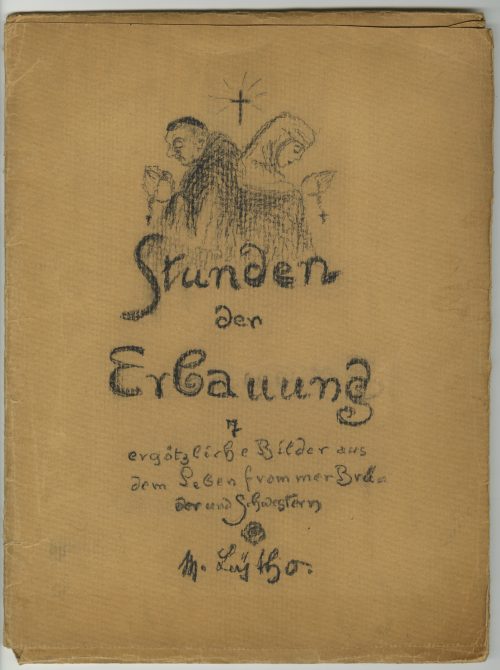 Flapped folder of thick embossed paper 353 x 263 mm, with a vignette and manuscript to front: Stunden der Erbauung | 7 | ergötz liebe Bilder aus | dem Leben frommer Brü | der und Schwestern | • | M. Leÿtho. ||, six graphite pencil drawings, each glued to a paper sheet with guard tissue; mat size 339 x 253 mm mat; drawing size 220 x 165 mm. Translation of the title: Hours of Edification / 7 delightful pictures from the lives of pious brothers and sisters. Information about the artist at www.honesterotica.com: "Mitja Leytho, almost certainly a pseudonym, is yet another mediocre yet fascinating amateur artist from the Germany of the 1920s about whom we know absolutely nothing beyond the four portfolios which bear the ‘Leytho’ signature".
Flapped folder of thick embossed paper 353 x 263 mm, with a vignette and manuscript to front: Stunden der Erbauung | 7 | ergötz liebe Bilder aus | dem Leben frommer Brü | der und Schwestern | • | M. Leÿtho. ||, six graphite pencil drawings, each glued to a paper sheet with guard tissue; mat size 339 x 253 mm mat; drawing size 220 x 165 mm. Translation of the title: Hours of Edification / 7 delightful pictures from the lives of pious brothers and sisters. Information about the artist at www.honesterotica.com: "Mitja Leytho, almost certainly a pseudonym, is yet another mediocre yet fascinating amateur artist from the Germany of the 1920s about whom we know absolutely nothing beyond the four portfolios which bear the ‘Leytho’ signature". -
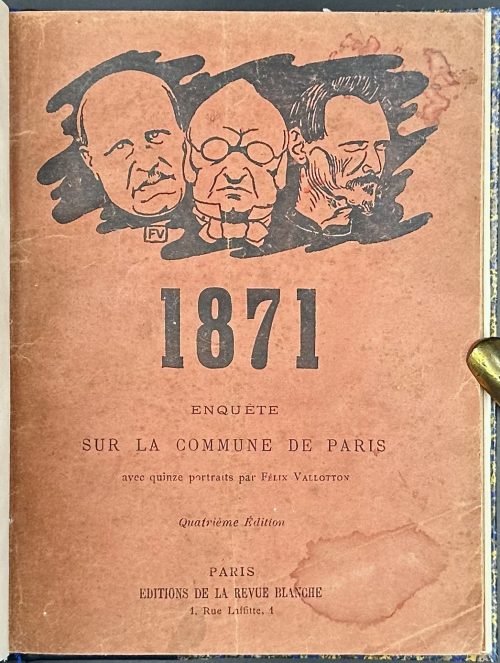 Hardcover, 20.2 x 15.5 cm, owner’s half blue morocco binding over marbled boards with gilt lettering to spine, marbled endpapers, extracts from La Revue Blanche, numbers 91 and 92 of March 15 and April 1 of 1897 (année VII, tome XII), publisher’s pink wrappers preserved, pp. [2] [1-5] 6-160. Ref.: Bridget Alsdorf. Vallotton, Fénéon, and the Legacy of the Commune in Fin-de-siècle France. Portraits: François [Quico] Merlin Colonel Merlin (French, 1814 – 1900) Adolphe Thiers (French, 1797 – 1877) Commandant Gaveau Fortuné Henry (French, 1821 – 1882) Otto von Bismarck (German, 1815 – 1898) Henri, comte de Chambord (French, 1820 – 1883) Louis Rossel (French, 1844 – 1871) François Huet Tranquille (French, 1842 – after 1879) Joseph Vinoy (French, 1803 – 1880) Raoul Rigault (French, 1846 – 1871) Eugène Varlin (French, 1839 – 1871) Théophile Ferré (French, 1845 – 1871) Georges Darboy (French, 1813 – 1871) Auguste Vermorel (French, 1841 – 1871) Jaroslaw Dombrowski [Jarosław Dąbrowski] (Polish-French, 1836 – 1871) Contributors: Félix Fénéon (French, 1861 – 1944) Félix Vallotton (French, 1865 – 1925) La Revue Blanche (Paris) Imprimerie Alcan-Lévy
Hardcover, 20.2 x 15.5 cm, owner’s half blue morocco binding over marbled boards with gilt lettering to spine, marbled endpapers, extracts from La Revue Blanche, numbers 91 and 92 of March 15 and April 1 of 1897 (année VII, tome XII), publisher’s pink wrappers preserved, pp. [2] [1-5] 6-160. Ref.: Bridget Alsdorf. Vallotton, Fénéon, and the Legacy of the Commune in Fin-de-siècle France. Portraits: François [Quico] Merlin Colonel Merlin (French, 1814 – 1900) Adolphe Thiers (French, 1797 – 1877) Commandant Gaveau Fortuné Henry (French, 1821 – 1882) Otto von Bismarck (German, 1815 – 1898) Henri, comte de Chambord (French, 1820 – 1883) Louis Rossel (French, 1844 – 1871) François Huet Tranquille (French, 1842 – after 1879) Joseph Vinoy (French, 1803 – 1880) Raoul Rigault (French, 1846 – 1871) Eugène Varlin (French, 1839 – 1871) Théophile Ferré (French, 1845 – 1871) Georges Darboy (French, 1813 – 1871) Auguste Vermorel (French, 1841 – 1871) Jaroslaw Dombrowski [Jarosław Dąbrowski] (Polish-French, 1836 – 1871) Contributors: Félix Fénéon (French, 1861 – 1944) Félix Vallotton (French, 1865 – 1925) La Revue Blanche (Paris) Imprimerie Alcan-Lévy -
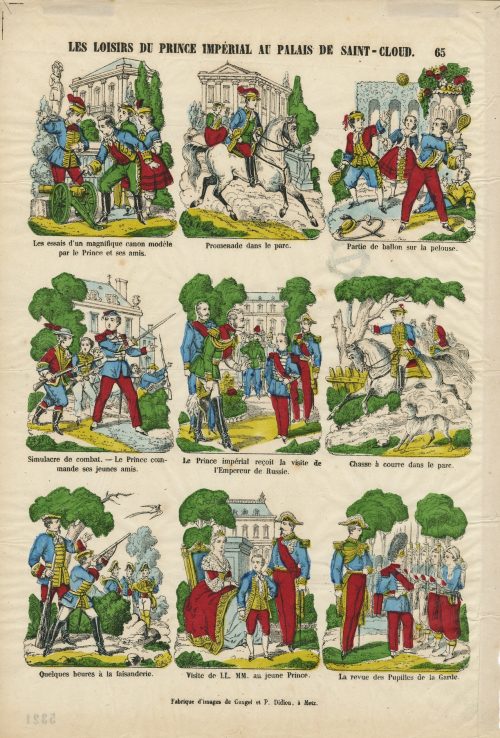 Hand-coloured woodcut on wove paper, 400 x 280 mm; black ink stamp “5321” to reverse. Top: "LES LOISIRS DU PRINCE IMPERIAL AU PALAIS DE SAINT- CLOUD" — "65". Below: nine cartoons with captions.
Hand-coloured woodcut on wove paper, 400 x 280 mm; black ink stamp “5321” to reverse. Top: "LES LOISIRS DU PRINCE IMPERIAL AU PALAIS DE SAINT- CLOUD" — "65". Below: nine cartoons with captions.- Les essais d'un magnifique canon modèle par le Prince et ses amis.
- Promenade dans le parc.
- Partie de ballon sur la pelouse.
- Simulacre de combat. — Le Prince commande ses jeunes amis.
- le Prince impérial reçoit la visite de l'Empereur de Russie.
- Chasse à courre dans le parc.
- Quelques heures à la faisanderie.
- Visite de LL. MM. au jeune Prince.
- La revue des Pupilles de la Garde.
-
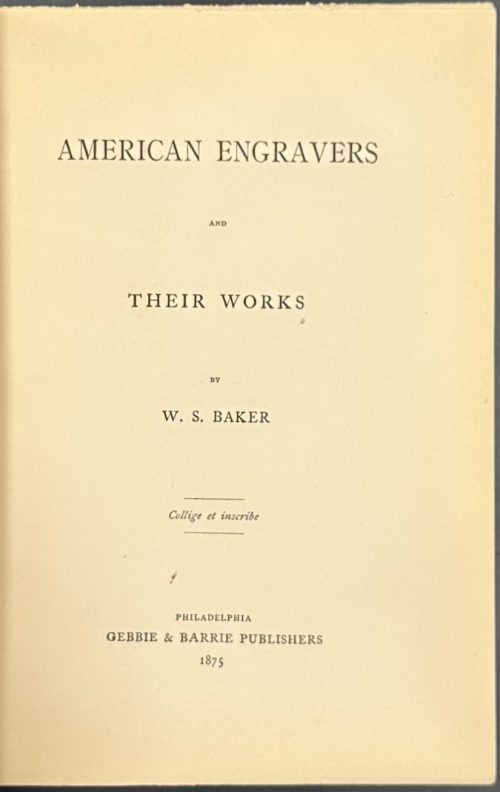 Hardcover, 19 x 13.8 cm, crimson buckram with tan paper label with lettering to spine; printed on laid paper; pp.: ffl [i-vi] vii-x] 11-184, collation 8vo, 1-118 124, total 92 leaves. Title-page: AMERICAN ENGRAVERS | AND | THEIR WORKS | BY | W. S. BAKER | Collige et inscribe | PHILADELPHIA | GEBBIE & BARRIE PUBLISHERS | 1875 || Motto: Collige et inscribe [Collect and record, lat.] Contributors: William Spohn Baker (American, 1824 – 1897) – author. George Gebbie (American, 1832 – 1892) – publisher. George Barrie (American, 1843 – 1918) – publisher. George R. Bonfield (British-American, 1802 – 1898) – dedicatee.
Hardcover, 19 x 13.8 cm, crimson buckram with tan paper label with lettering to spine; printed on laid paper; pp.: ffl [i-vi] vii-x] 11-184, collation 8vo, 1-118 124, total 92 leaves. Title-page: AMERICAN ENGRAVERS | AND | THEIR WORKS | BY | W. S. BAKER | Collige et inscribe | PHILADELPHIA | GEBBIE & BARRIE PUBLISHERS | 1875 || Motto: Collige et inscribe [Collect and record, lat.] Contributors: William Spohn Baker (American, 1824 – 1897) – author. George Gebbie (American, 1832 – 1892) – publisher. George Barrie (American, 1843 – 1918) – publisher. George R. Bonfield (British-American, 1802 – 1898) – dedicatee. -
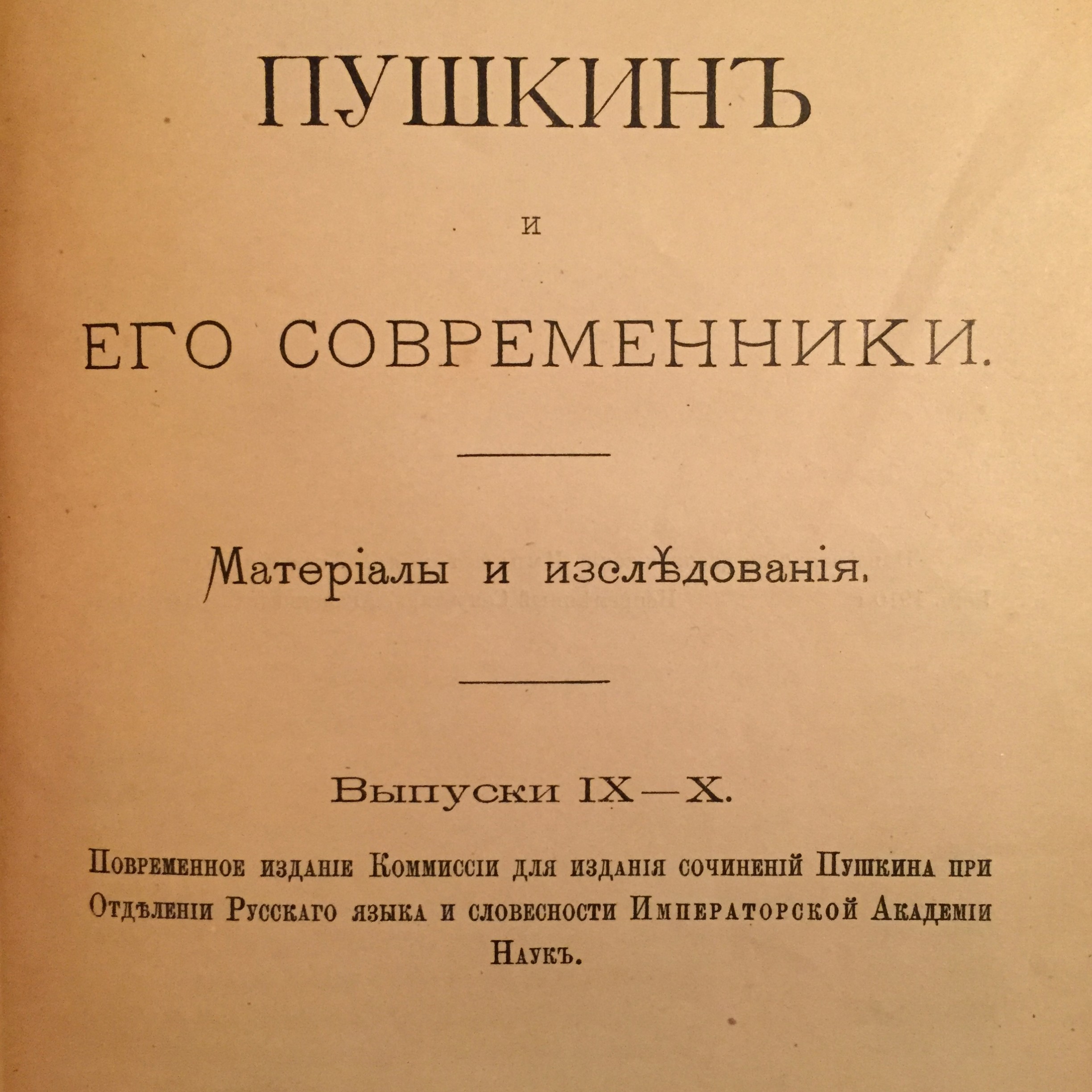
Библиотека А.С.Пушкина. Библиографическое описание.
Пушкин и его современники. Материалы и изследования. Вып. IX- X. Повременное изданiе Коммиссiи для изданiя сочиненiй Пушкина при Отдѣленiи Русскаго языка и словесности Императорской Академiи Наукъ.
СПб.: Тип.Императорской Академiи Наук, 1910. - 461 стр.
-
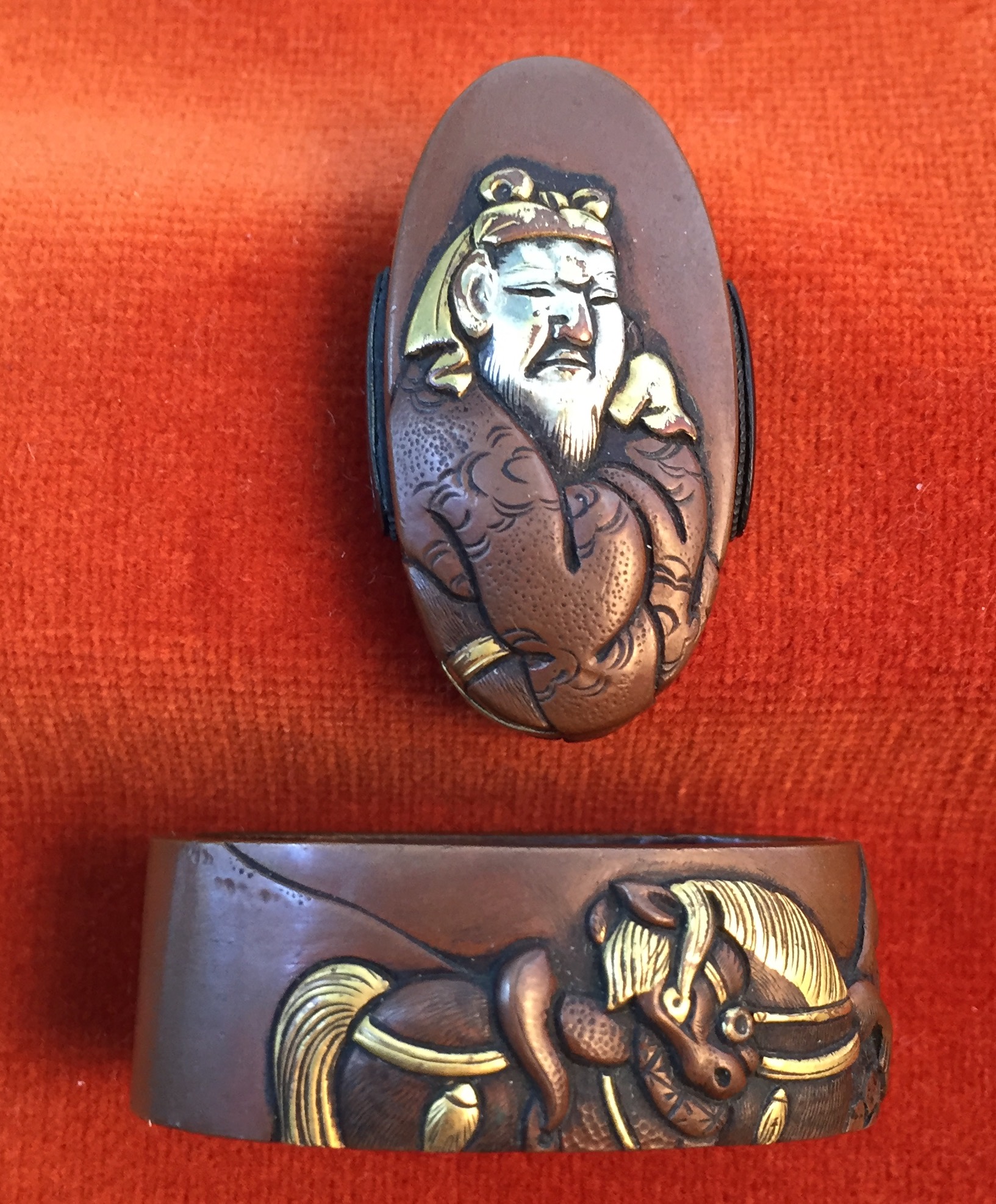 Fuchi: 38 x 22 x 14 mm. Kashira: 33 x 18 x 9 mm Techniques: Usu-shishiai-bori (薄肉合彫) – low-relief, zogan.
Fuchi: 38 x 22 x 14 mm. Kashira: 33 x 18 x 9 mm Techniques: Usu-shishiai-bori (薄肉合彫) – low-relief, zogan. -
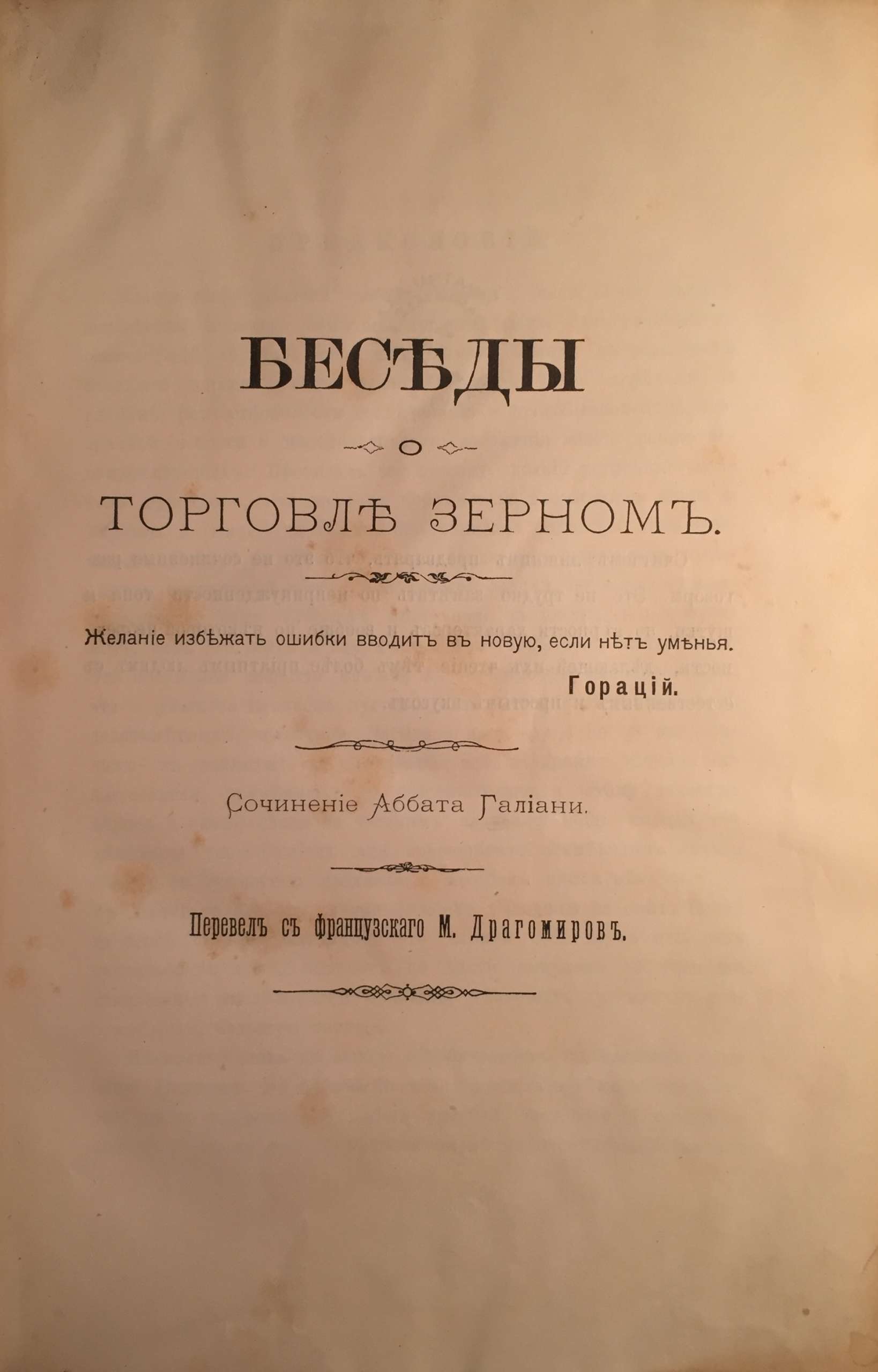
Беседы о торговле зерном. Сочинение аббата Галиани. Перевел с французского М. Драгомиров. — [Киев]: [тип. Окр. Штаба], [1891]. — [4], III, [3], 210, XXII стр. Примечание: Доб. тит. л. на фр. яз.: Dialogues sur le commerce des bleds. — A Londres, MDCCLXX.
-
 Iron tsuba of round form with design of the Chinese character for cinnabar (shu-no-ji) in openwork (sukashi). Round-cornered rim. Copper sekigane. Kanayama school. Early Edo period: Early 17th century (Kan-ei era). Height: 70.0 mm. Width: 69.6 mm. Rim thickness: 6.8 mm. Center thickness: 5.8 mm. Provenance: Sasano Masayuki Collection, № 139: "Many areas have a coarse texture and strong tekkotsu, with the thickness of the metal graduating from the rim to the seppa-dai. The combined color of the iron and motif date this work to the early Edo period".
Iron tsuba of round form with design of the Chinese character for cinnabar (shu-no-ji) in openwork (sukashi). Round-cornered rim. Copper sekigane. Kanayama school. Early Edo period: Early 17th century (Kan-ei era). Height: 70.0 mm. Width: 69.6 mm. Rim thickness: 6.8 mm. Center thickness: 5.8 mm. Provenance: Sasano Masayuki Collection, № 139: "Many areas have a coarse texture and strong tekkotsu, with the thickness of the metal graduating from the rim to the seppa-dai. The combined color of the iron and motif date this work to the early Edo period". -
 Kozuka with seven insects (fly, grasshopper, bee, butterfly, dragonfly, firefly, and cricket) and grass with dewdrops motif. Shakudō, flush gold inlay (hira-zōgan). 95.2 (H) x 13.7 mm (W). Mid Edo period (Late 17th - early 18th century, Genroku era 1688-1703). Unsigned. Kaga school. A look-a-like kozuka (with five insects) is illustrated at Japanese Sword Fittings. A descriptive catalogue of the Collection of G.H. Naunton, Esq., completed and illustrated by Henri L. Joly, - 1912 on plate XXIX, №691 [LIB-1389 in this Collection] with the following description at page 54: "Shakudō, inlaid with butterfly, dragon-fly, grasshopper, locust and another insect, gold."
Kozuka with seven insects (fly, grasshopper, bee, butterfly, dragonfly, firefly, and cricket) and grass with dewdrops motif. Shakudō, flush gold inlay (hira-zōgan). 95.2 (H) x 13.7 mm (W). Mid Edo period (Late 17th - early 18th century, Genroku era 1688-1703). Unsigned. Kaga school. A look-a-like kozuka (with five insects) is illustrated at Japanese Sword Fittings. A descriptive catalogue of the Collection of G.H. Naunton, Esq., completed and illustrated by Henri L. Joly, - 1912 on plate XXIX, №691 [LIB-1389 in this Collection] with the following description at page 54: "Shakudō, inlaid with butterfly, dragon-fly, grasshopper, locust and another insect, gold." See also tsuba TSU-0211 in this collection:
See also tsuba TSU-0211 in this collection:


-

-
 Iron tsuba of four-lobbed mokkō form decorated in brass and shakudō inlay on the face with design of rotten skull, fly, maple leaf, pine cones and needles, and on the back with design of rotten skull, wild boar, pine cones and needles. Scattered brass dots on both sides. Hitsu-ana possibly cut off later. Surface has traces of lacquer (urushi). Momoyama period. Dimensions: 67.3 x 61.5 x 4.3 mm A similar example can be found at Tsuba Kanshoki by Kazutaro Torogoye, 1975 on p. 61: "Heianjōzōgan tsuba. No sig. Iron: Pine-cone, seeds, ants & rock, brass zōgan. Kakumimi: C. 1.5 bu. Age: Momoyama. Sup. - Early work. Interest."
Iron tsuba of four-lobbed mokkō form decorated in brass and shakudō inlay on the face with design of rotten skull, fly, maple leaf, pine cones and needles, and on the back with design of rotten skull, wild boar, pine cones and needles. Scattered brass dots on both sides. Hitsu-ana possibly cut off later. Surface has traces of lacquer (urushi). Momoyama period. Dimensions: 67.3 x 61.5 x 4.3 mm A similar example can be found at Tsuba Kanshoki by Kazutaro Torogoye, 1975 on p. 61: "Heianjōzōgan tsuba. No sig. Iron: Pine-cone, seeds, ants & rock, brass zōgan. Kakumimi: C. 1.5 bu. Age: Momoyama. Sup. - Early work. Interest."
Tsuba Kanshoki, 1975, p. 61: Heianjō tsuba, Momoyama Period.
-

Iron tsuba of round form pierced (sukashi) and carved (marubori) with a 'noshi' decoration design. Noshi - decoration made of dried abalone (awabi) and bearing an auspicious connotation of good fortune, prosperity, etc. Design was used as a family crest (mon).
Size: 76.3 x 75.9 x 5.5 mm.
Signed: Echizen jū Kinai Saku. Kinai school existed from mid 17th to mid 19th century; it is hard to tell which master (generation from 1 to 6) made this particular piece.
SOLD -
 Katsukawa Shun'ei (勝川 春英; 1762 – 1819).TITLE: Sawamura Sôjûrô III as Kakogawa Honzô.SERIES: Kanadehon Chūshingura (Kana practice book: Treasury of the loyal retainers").DATE: 1795Signed: Shun'ei ga (春英画). Publisher: Iwatoya Kisaburō, Marks 173/p.169. Vertical Ōban: 14.75 x 9.625 inchOn 4th lunar month of 1795 Sôjûrô plays the roles of En'ya Hangan and Kakogawa Honzô in the drama "Kanadehon Chûshingura" at Miyakoza theater in Edo.
Katsukawa Shun'ei (勝川 春英; 1762 – 1819).TITLE: Sawamura Sôjûrô III as Kakogawa Honzô.SERIES: Kanadehon Chūshingura (Kana practice book: Treasury of the loyal retainers").DATE: 1795Signed: Shun'ei ga (春英画). Publisher: Iwatoya Kisaburō, Marks 173/p.169. Vertical Ōban: 14.75 x 9.625 inchOn 4th lunar month of 1795 Sôjûrô plays the roles of En'ya Hangan and Kakogawa Honzô in the drama "Kanadehon Chûshingura" at Miyakoza theater in Edo. -
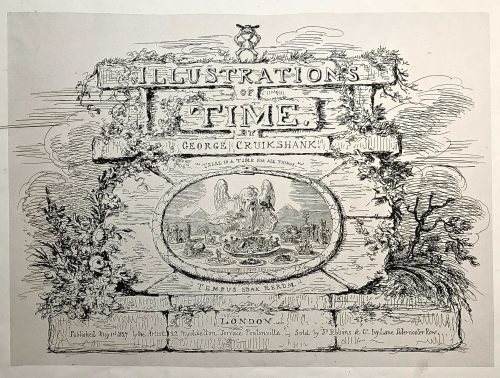
Engraved title page: ILLUSTRATION | OF | TIME. | GEORGE CRUIKSHANK. | "THERE IS A TIME FOR ALL THINGS". | TEMPUS EDAX RERUM. | LONDON | Published May 1st 1827 by the Artist - 22 Myddelton Terrace Pentonville. - Sold by Js. Robins & Co. Ivy Lane Paternoster Row.
Oblong folio, 33.5 x 44 cm. Engraved vignette title page and six not-coloured engraved plates with multiple images showing thirty-five humorous scenes.
First edition, first issue. Uncoloured. Pristine condition.
Half-leather bound in marbled cardboard and red morocco and gild lettering and arabesque. Frontispiece and 6 plates with protective tissues.
Content:1. Time-Called & Time-Come (five sketches)
2. Behind Time (seven sketches)
3. Time Thrown Away (six sketches)
4. Hard Times [&] Term Time (five sketches)
5. Time Badly Employed (five sketches)
6. Christmas Time (seven sketches)
British Museum № 1978,U.3026.1. BM description: "Frontispiece, the title on a background of symmetrical but dilapidated and grass-grown masonry. On the summit stands a little laughing gnome, with a wide hat and a body formed of an hour-glass; Inset is an oval bordered by a serpent with its tail in its mouth (emblem of eternity), in which is an aged and all-devouring Time (bald except for a forelock), seated behind a table whose surface is the base of the design. He puts to his mouth a fork on which is speared an elephant with a castle on its back containing tiny figures with spears. In his r. hand is a spoon containing a country church. His table is covered with dishes, and at his r. hand is a sickle. The central and biggest dish is heaped with a jumble of tiny objects: crown, table, chair, wheelbarrow, picture; round the room sit little figures: a soldier, parson, lady and child, &c. The ten other dishes contain: an antique glass coach with horses and footmen; an overladen camel beside a palm-tree; ruins of a castle; a farmhouse; a shepherd and sheep; a dismantled cannon and balls, cattle, a man-of-war in full sail; a ruinous Gothic cathedral; a clump of trees (the last two are dominated by a large decanter). Below Time are two (Egyptian) pyramids. Above: 'There Is A Time For All Things'; below: 'Tempus Edax Rerum'. 1 May 1827. Etching."Bibliography:- Reid, G W, A descriptive catalogue of the works of George Cruikshank, London, 1871.
- Stephens, Frederic George; George, Mary Dorothy, Catalogue of Political and Personal Satires in the Department of Prints and Drawings in the British Museum, 11 vols, London, BMP, 1870.
- Cohn, A M, George Cruikshank, catalogue raisonné, London, 1924.
-
 Utagawa Kunisada [歌川 国貞]; a.k.a. Utagawa Toyokuni III [三代歌川豊国] (Japanese, 1786 – 1865). Signed: Toyokuni ga [豊国 画] in a red toshidama cartouche. Publisher: Ibaya Senzaburō [伊場屋仙三郎] (Japanese, fl. 1815 – 1869). Block carver: Yokokawa Takejirō [横川竹二郎] (Japanese, fl. 1845 – 1863), seal: 彫竹 – Hori Take. Date seal and aratame censor seal: May of the Year of Dragon [辰五] (Tatsu-go) (5/1856) (Not in Marks).
Utagawa Kunisada [歌川 国貞]; a.k.a. Utagawa Toyokuni III [三代歌川豊国] (Japanese, 1786 – 1865). Signed: Toyokuni ga [豊国 画] in a red toshidama cartouche. Publisher: Ibaya Senzaburō [伊場屋仙三郎] (Japanese, fl. 1815 – 1869). Block carver: Yokokawa Takejirō [横川竹二郎] (Japanese, fl. 1845 – 1863), seal: 彫竹 – Hori Take. Date seal and aratame censor seal: May of the Year of Dragon [辰五] (Tatsu-go) (5/1856) (Not in Marks). Uncut fan print (uchiwa-e) depicting Onoe Kikugorō IV as Karukaya Dōshin parting from his son, Ishidomaru (played by Ichimura Uzaemon XIII), and Kawarasaki Gonjūrō I as Yamazakiya Yogoro in the kabuki play Karukaya Dōshin Tsukushi no Iezuto [苅萱桑門筑紫𨏍], written by Namiki Sōsuke [並木宗輔] (Japanese, 1695 – 1751) and performed at Ichimuraza [市村座] in 05/1856.
Media: Fan print [団扇絵] (Uchiwa-e); size: 235 x 305 mm.
Actors:
Onoe Kikugorō IV [四代目 尾上菊五郎] (Japanese, 1808 – 1860); other names: Onoe Baikō IV, Onoe Eizaburō III, Onoe Kikue, Nakamura Tatsuzō, Nakamura Kachō.
Onoe Kikugorō V [五代目尾上菊五郎] (Japanese, 1844 – 1903 other names: Onoe Baikō V, Ichimura Kakitsu IV, Ichimura Uzaemon XIII [十三代目市村羽左衛門], Ichimura Kurōemon.
Ichikawa Danjūrō IX [市川団十郎] (Japanese, 1838 – 1903); other names: Kawarasaki Sanshō, Kawarasaki Gonnosuke VII, Kawarasaki Gonjūrō I, Kawarasaki Chōjūrō III.
Plot: It was a popular belief at one time that jealous women had their hair transformed into writhing serpents and Kato Sayemon Shige-Uji, a daimyo of Tsukushi, a much-married man, suffered from the delusion that his wife was so affected. He fled to the mountains to escape her and led the life of a hermit under the name of Karukaya Doshin [苅萓道心]. One day, on Mount Kōya (高野山, Kōyasan) Karukaya meets a young man who was wandering in the mountains. Being questioned, the youth tells his name, Ishidomaru, and elicits the information that he is seeking his lost father. Karukaya then recognizes the boy as his own son, but firm in the resolve to remain lost to the world, he refrains from disclosing himself, and bids the youth return home.
Provenance: Paul F. Walter (American, 1935 – 2017).
Ref.:
Uncut fan print (uchiwa-e) depicting Onoe Kikugorō IV as Karukaya Dōshin parting from his son, Ishidomaru (played by Ichimura Uzaemon XIII), and Kawarasaki Gonjūrō I as Yamazakiya Yogoro in the kabuki play Karukaya Dōshin Tsukushi no Iezuto [苅萱桑門筑紫𨏍], written by Namiki Sōsuke [並木宗輔] (Japanese, 1695 – 1751) and performed at Ichimuraza [市村座] in 05/1856.
Media: Fan print [団扇絵] (Uchiwa-e); size: 235 x 305 mm.
Actors:
Onoe Kikugorō IV [四代目 尾上菊五郎] (Japanese, 1808 – 1860); other names: Onoe Baikō IV, Onoe Eizaburō III, Onoe Kikue, Nakamura Tatsuzō, Nakamura Kachō.
Onoe Kikugorō V [五代目尾上菊五郎] (Japanese, 1844 – 1903 other names: Onoe Baikō V, Ichimura Kakitsu IV, Ichimura Uzaemon XIII [十三代目市村羽左衛門], Ichimura Kurōemon.
Ichikawa Danjūrō IX [市川団十郎] (Japanese, 1838 – 1903); other names: Kawarasaki Sanshō, Kawarasaki Gonnosuke VII, Kawarasaki Gonjūrō I, Kawarasaki Chōjūrō III.
Plot: It was a popular belief at one time that jealous women had their hair transformed into writhing serpents and Kato Sayemon Shige-Uji, a daimyo of Tsukushi, a much-married man, suffered from the delusion that his wife was so affected. He fled to the mountains to escape her and led the life of a hermit under the name of Karukaya Doshin [苅萓道心]. One day, on Mount Kōya (高野山, Kōyasan) Karukaya meets a young man who was wandering in the mountains. Being questioned, the youth tells his name, Ishidomaru, and elicits the information that he is seeking his lost father. Karukaya then recognizes the boy as his own son, but firm in the resolve to remain lost to the world, he refrains from disclosing himself, and bids the youth return home.
Provenance: Paul F. Walter (American, 1935 – 2017).
Ref.:
- [LIB-2110.2019] Samuel L. Leiter. Historical Dictionary of Japanese Traditional Theatre (Historical Dictionaries of Literature and the Arts). / 2nd edition. – Lanham: Rowman & Littlefield, 2014; pp. 379-380.
- [LIB-2206.2019] Basil Stewart. Subjects portrayed in Japanese colour-prints. — London: Kegan Paul, Trench, Trubner & Co. Ltd., 1922.


